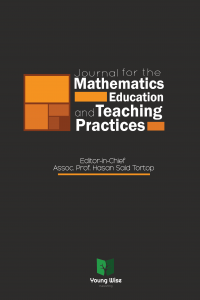
Journal for the Mathematics Education and Teaching Practices
Yazarlar: ["Anna PAYNE"]
Konular:-
Anahtar Kelimeler:Mathematical modeling,Modeling cycle,Professional content knowledge,Problem solving,Mathematics education
Özet: Mathematical modeling is the process of addressing a real-life task using mathematical concepts. Used in applied mathematics, engineering, the natural and social sciences, educators are recognizing that the use of mathematical modeling as a teaching tool gives students the opportunity to work conceptually on topics that are inherently motivating and engaging and are connected to real-life situations. This can support learning in the mathematics classroom in multiple ways, by using learning for transfer, problem-solving, and conceptual understanding. Students are able to incorporate cross-curricular skills and use real-life examples, which can make mathematics significantly more engaging. Modeling also provides students of varying ability levels to access content knowledge and construct new learning with mathematics that will extend beyond the classroom which is important especially in heterogenous classrooms and increasingly an increasingly diverse student population. Students who understand modeling have the potential to become stronger mathematicians and also use mathematics effectively later in life-whether working in a mathematics-related field or not. Providing professional development for teachers is crucial to making sure that modeling will be enacted with fidelity in the classroom. For pre-service teachers to effectively implement modeling in the classroom, they should both experience modeling as students themselves, learn how to create modeling scenarios in methods coursework, and then have multiple opportunities to enact modeling lessons with students. In-service teachers also need to have professional learning experiences with modeling, including creation of modeling activities, ways to implement modeling scenarios effectively, options for grouping students during modeling (including ways to work with language learners and students with special education needs), ways to grade modeling work, and how to connect modeling to curricular demands. Mathematical modeling is a highly-effective, engaging method to connect students to real-life mathematics, but teachers need professional learning supports if modeling is to be implemented effectively.